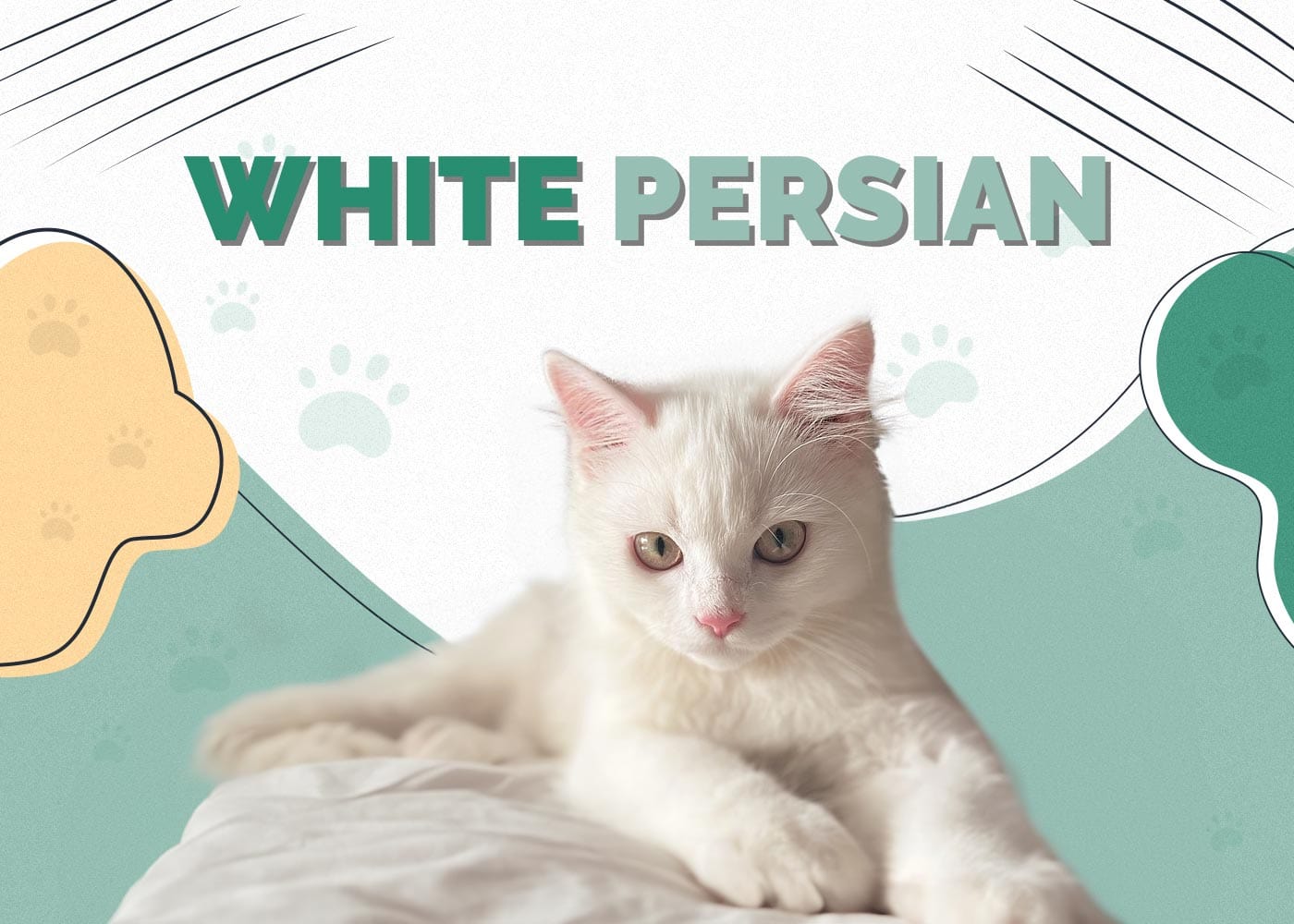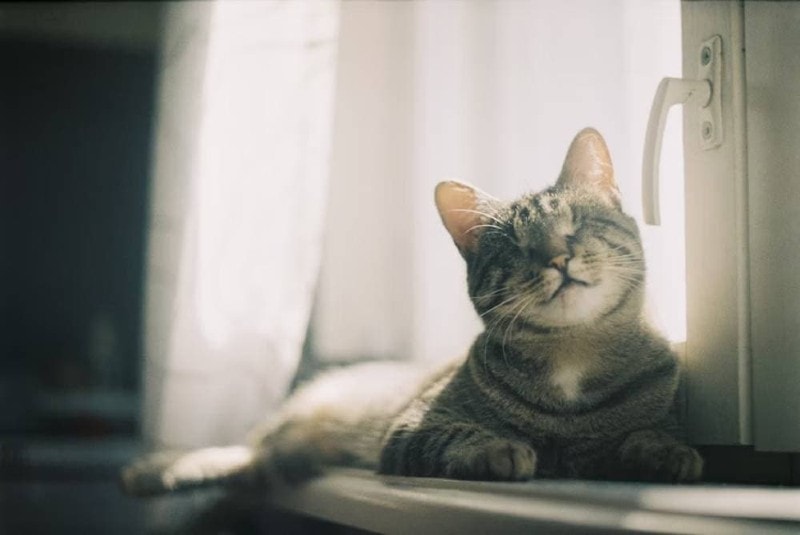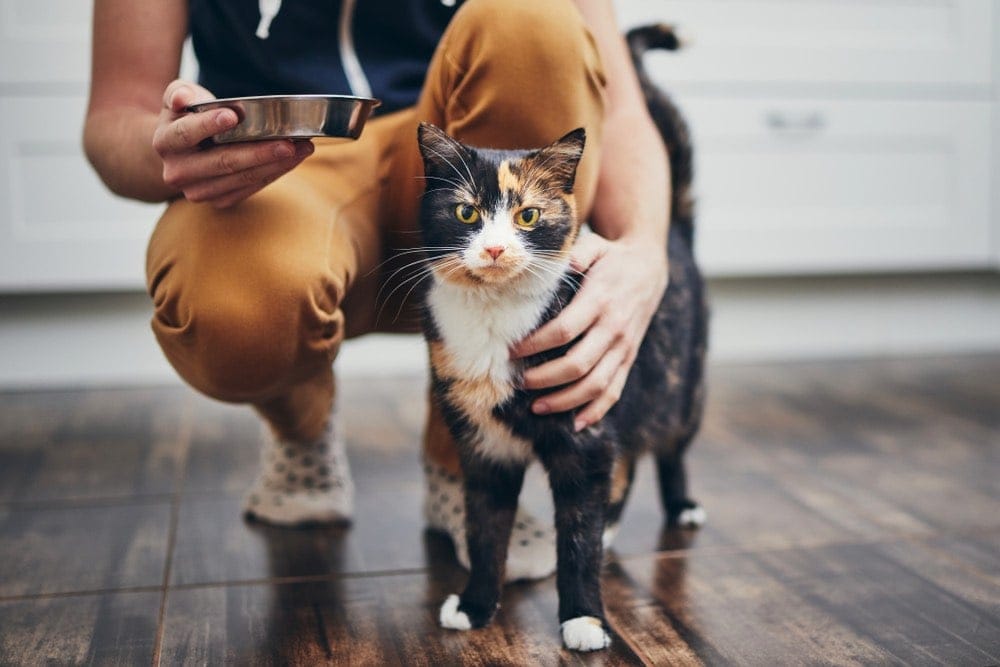Male vs. Female Bengal Cat: What’s the Difference? (With Pictures)

Updated on
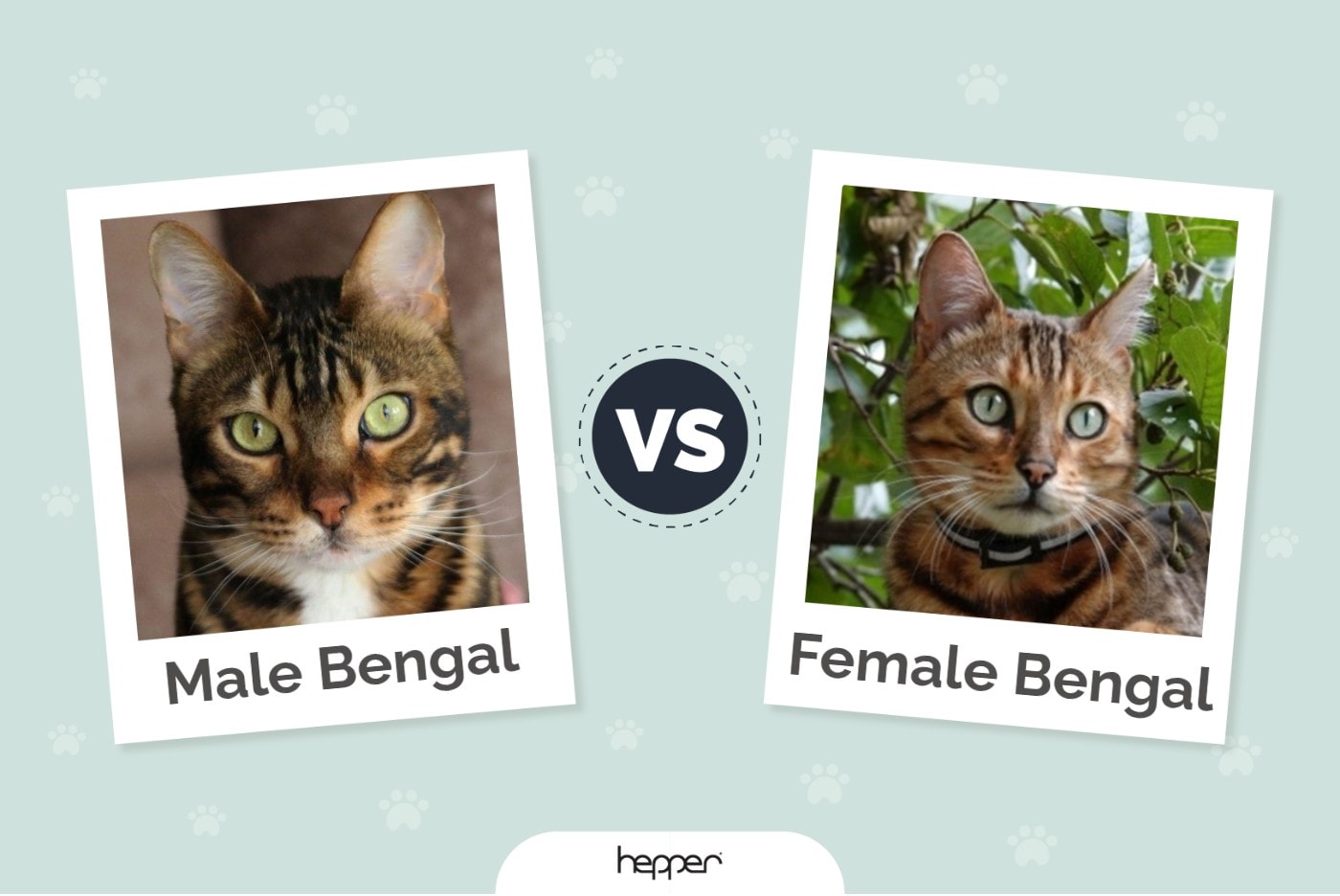
Click to Skip Ahead
If you’ve decided to add an exotic-looking Bengal cat to your family, you might be wondering whether to purchase a male or female kitten and what the differences are between the two genders when it comes to things like size, personality, and medical needs.
There’s one difference that absolutely stands out between male and female Bengal cats: large male Bengal cats can easily weigh two times more than their female mates! But other than that, the differences between male and female Bengal cats are, by and large, relatively minimal. Read on to learn how to know which gender is best for you.
Visual Differences
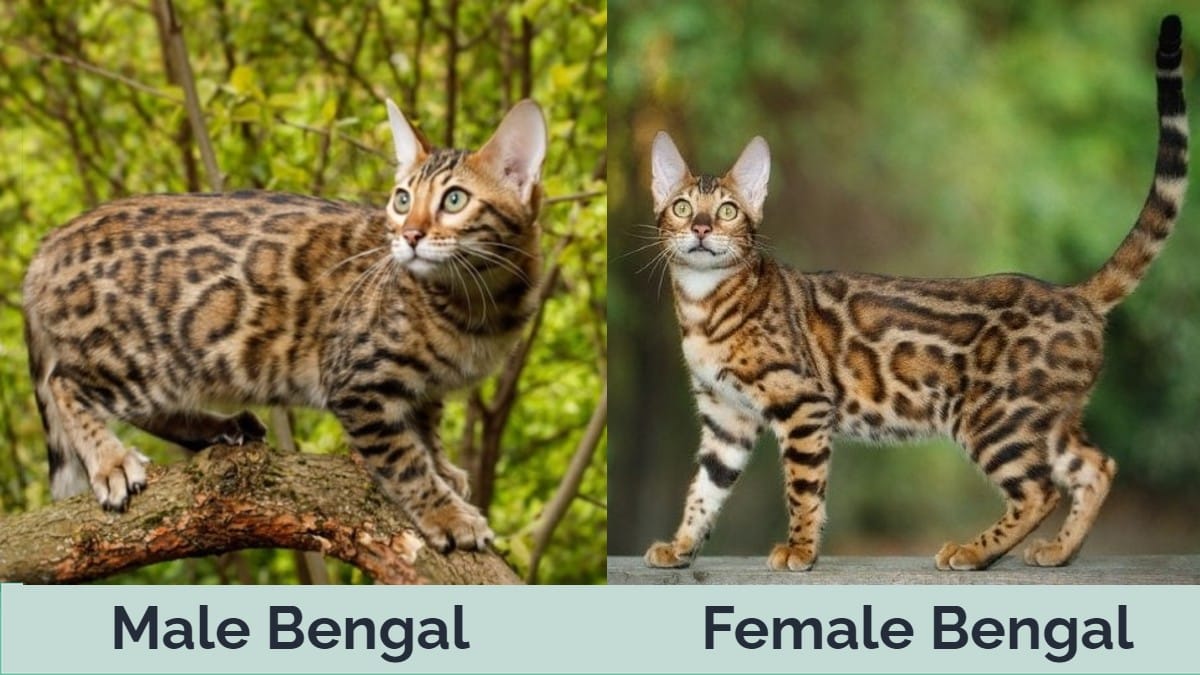
At a Glance
- Average height (adult): 14–18 inches
- Average weight (adult): 9–15 pounds
- Average height (adult): 13–16 inches
- Average weight (adult): 6–12 pounds
Bengal Cats 101
Bengal cats bring a bit of the wild into your living room. As a cross between an Asian Leopard Cat and a domestic feline, Bengals have stripes and dots that make them look like miniature tigers and affectionate personalities their humans can’t seem to get enough of. They tend to be active, wickedly smart, and quite vocal. And they’re one of the few cat breeds that actually enjoy playing in and around water!
It usually takes these slender, graceful creatures around two years to reach adulthood. They’re a bit on the naughty and adventurous side as kittens, but Bengal cats mellow with age, becoming more inclined to nap than terrorize toes. Most live for 10 and 18 years. And while many are calm, loveable pets, some become aggressive when around small children or other pets, so you might want to think twice about adopting a Bengal if either of these conditions is relevant to your living situation.
Male Bengal Cat Overview
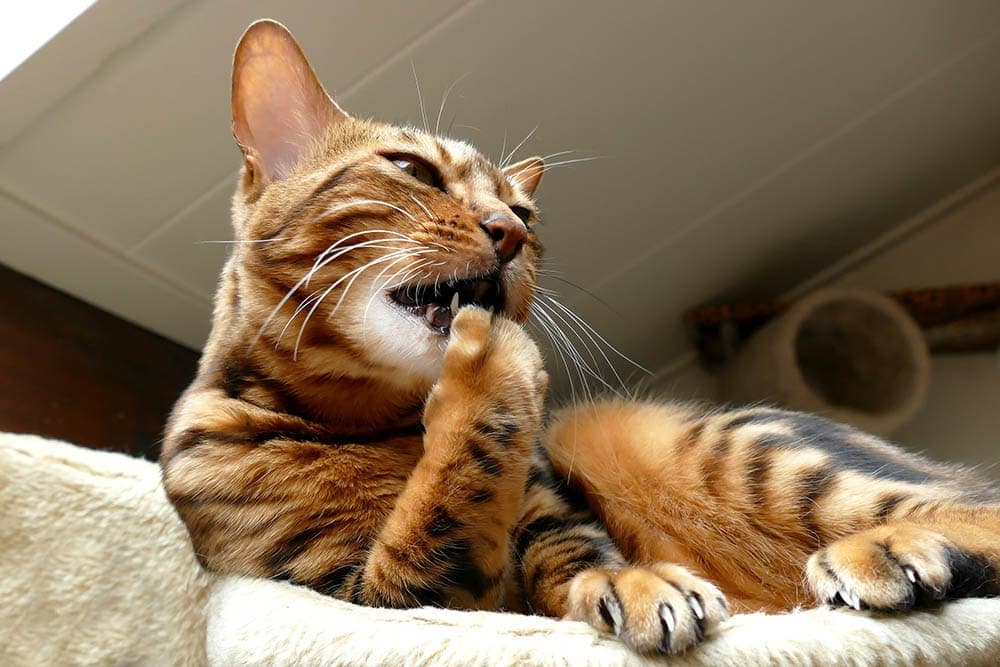
Personality / Character
Male Bengal cats tend to be affectionate, slightly naughty, and very smart. They’re often a bit on the aloof side if they haven’t been raised in a family where they received lots of human contact and attention. Male Bengal cats have a reputation for being friendlier than female Bengal cats. And they’re also known for getting along well with other animals; female Bengals can sometimes be a bit more unwelcoming when it comes to other pets.
Intact male Bengal cats are a totally different ballgame, however. They often spray, and some will even refuse to deal with the litter box. Non-neutered male Bengal cats have been known to become aggressive towards their owners and predatory towards other animals, including non-hybrid cats.
Training
Male Bengal cats are usually very trainable, which is a characteristic that goes hand in hand with their intelligence and high energy levels. These felines are often described as “dog-like” due to their sociability and trainability. Many owners have luck getting their male Bengal cats to walk on a leash, which can lead to tons of fun cat-centered outdoor bonding activities.
They typically respond well to clicker training, and some owners have even managed to get these kitties to do tricks! Cats often do well with reward-based training routines that are fun as well as mentally and physically stimulating, which can help minimize destructive boredom-related behavior. So stock up on a few treats, and your Bengal cat will be shaking hands with impressed humans in no time.
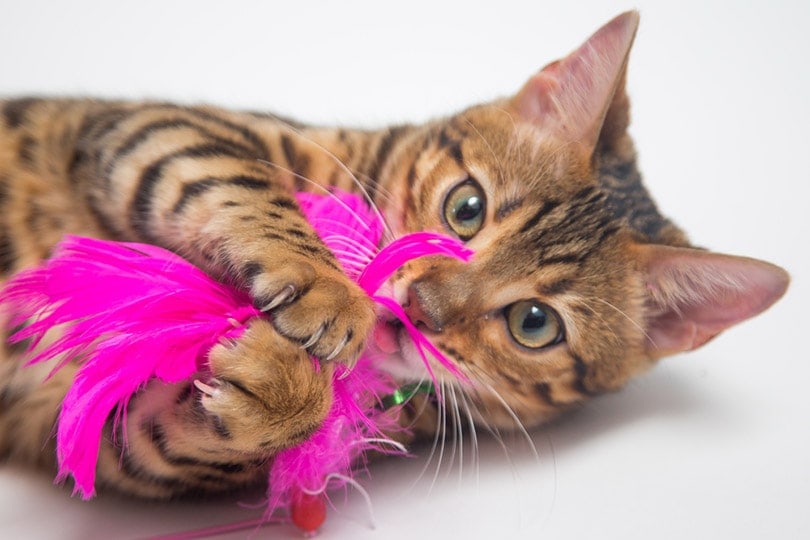
Health & Care
Male Bengal cats have many of the same health issues as other breeds, including susceptibility to various infections, such as panleukopenia and rabies. Most Bengal cats enjoy spending at least some time outdoors, but remember, these are active animals, so up-to-date vaccinations are critical to keeping bacterial and viral infections at bay.
Some develop conditions, such as progressive retinal atrophy (PRA) and hip dysplasia, that appear to have a genetic or hereditary link. Un-neutered males have a higher rate of developing conditions, such as testicular cancer and prostate issues. But, neutering limits the risk of developing these serious reproductive health issues. Many intact male Bengals have health problems related to aggression and injuries sustained while fighting other animals.
Breeding
The breeding of Bengal cats is best left to experts. A first-generation Bengal (F1), a mix of a domestic cat and an Asian leopard cat, is emphatically not a domesticated animal and will not behave as one in your home.
F1 Bengals are often aggressive both towards owners and other animals, have no interest in using the litter box, engage in destructive behaviors, and spray throughout the house. Many of these F1 cats are sterile or born with serious physical defects. And just in case you’re wondering, you’ll be busy with your breeding activities for a long time before you’ll have a domesticated Bengal cat on your hands — cats must be at least four generations removed from their Asian leopard cat ancestor to be considered domesticated. Some states have restrictions on Bengal ownership through the fourth or fifth generation.
- Super smart
- Trainable
- Intact males can be aggressive
- Hereditary diseases
Female Bengal Cat Overview
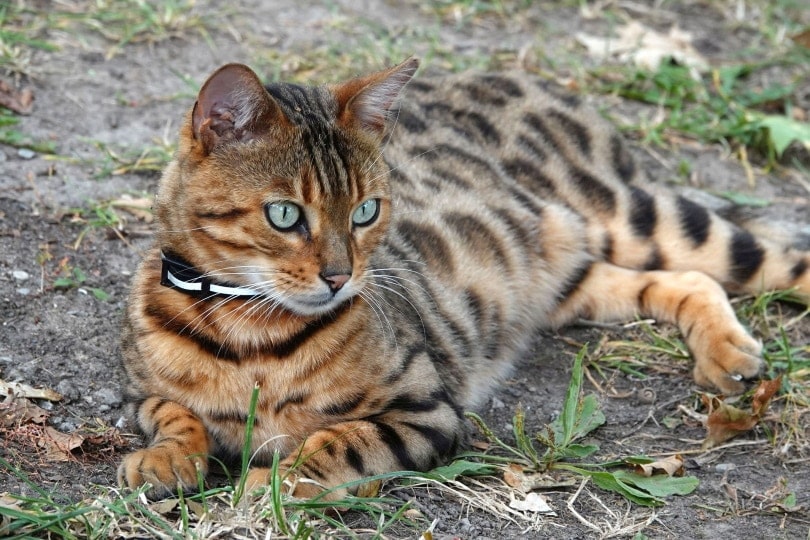
Personality / Character
Female Bengal cats have personalities similar to their male counterparts, tending to be affectionate, intelligent, and super easy to get along with. They’re incredibly social and enjoy spending time with family members, and they often have one person to whom they’re super loyal.
They tend to be a bit less standoffish than male Bengal cats, making female Bengals a great choice for families with children and those who enjoy lots of one-on-one interaction with their feline companion. Keep in mind these kitties can be extremely vocal; they’re more than happy to make their displeasure known! Intense vocalization during heat can be an issue with non-spayed female Bengal cats.
The problem can be addressed by spaying your kitty, which will prevent all of those hormones from kicking in and increasing undesirable behaviors.
There’s really no difference between the two genders when it comes to learning training. Female Bengal cats often enjoy the training process as it gives these super-intelligent creatures something to occupy their time and minds.
And given the highly active nature of these kitties, it’s a great way to minimize boredom-related misbehavior and limit stress, which can contribute to an increase in undesirable feline behavior like couch destruction, aggression, and extreme vocalization. The best way to train a female Bengal cat is with lots of affection and treats.
Health & Care
Female Bengal cats don’t have any special care requirements, and these short-haired kitties don’t need extra grooming. Healthy food, plenty of water, vaccinations, and once-yearly checkups with your veterinarian are the only standard care demands for these gorgeous animals. Be aware, however, that both male and female Bengal cats are at heightened risk of developing various hereditary diseases. The best way to ensure you’re bringing home a healthy cat is to purchase your new pet from a reputable breeder.
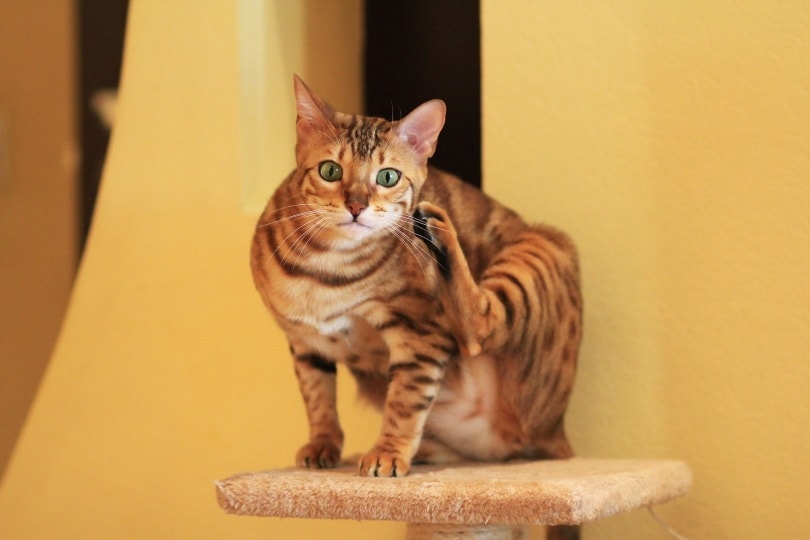
Breeding
The same words of caution apply when it comes to breeding male and female Bengal cats—proceed with extreme caution. If you end up adopting an animal that is less than fully domesticated and choose not to have her spayed, the chances are that problems will ensue, with escape attempts and extreme vocalization being the most common culprits.
Female Bengal cats, like all cats, are at heightened risk for diseases such as pyometra, a disease of the reproductive organs that can be fatal if not promptly treated. Leaving your cat unspayed is akin to hanging out the welcome sign for unneutered males to come for a visit, which can put other animals you have at home in danger, as unneutered male cats can often be aggressive when pursuing mating opportunities.
- Smart
- Easy to train
- Can be possessive
- Extremely vocal if not spayed
Do Bengal Cats Suffer From Any Genetic Issues?
Unfortunately, the answer is yes. Bengal cats of both genders are at increased risk of developing cataracts and progressive retinal atrophy (PRA), which is a disease where the photoreceptor cells in a cat’s eye begin to die. The condition is almost always progressive, resulting in complete vision loss, and there’s currently no way to prevent or cure the disease. It often impacts very young cats, including kittens only a few months old.
Another disease frequently found in Bengal cats is hypertrophic cardiomyopathy (HCM). Cats with HMC have enlarged hearts. Scientists identified the precise gene that’s the culprit, and they know the condition is largely hereditary in Bengal cats.
Hip dysplasia can also impact these kitties. This painful condition often results in joint deterioration and pain when moving. Keep in mind, however, that genetic diseases are more common among purebred and exotic cats than in mixed breeds.
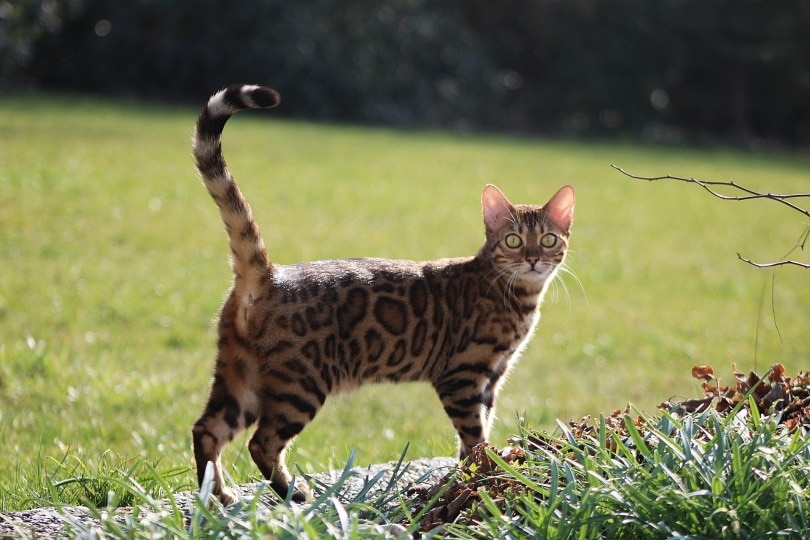
What Do You Mean by an F1 Bengal Cat?
Bengal cats are hybrid animals, resulting from a mix of an Asian leopard cat and a domestic cat. The offspring of that first mixture is considered an F1 Bengal cat and classified as not domesticated.
Breeding an F1 Bengal with a domestic cat results in an F2 Bengal cat, and so on. And in many states, it’s actually illegal (or only legal with a permit) to own a non-domesticated cat. To be safe, all Bengal cats should be purchased from a reputable breeder with records or DNA results demonstrating the domesticity of your future buddy.
Which Gender Is Right for You?
Bengal cats offer owners the best of both worlds: a pet with the looks of a wild animal and the temperament of a domesticated cat. And in truth, both male and female cats make wonderful companions and familial additions! Animals of both genders are active, playful, affectionate, and loyal. As they’re curious and a bit rambunctious, both male and female Bengal cats tend to enjoy the water.
But there are, of course, differences between Bengal cats of different genders. Male cats tend to be slightly larger and more aloof and independent. So, if you’re looking for a cat who’s by and large not seeking extensive human contact, you might be happier with a male Bengal cat. Female Bengals are often better choices for families with children and those who want a close relationship with their feline companion.
Keep in mind that the differences between male and female Bengals increase if you’re talking about unneutered animals. Males become far more aggressive, and females are more inclined to seek out human contact and engage in extreme vocalization.
Featured Image Credit: left: Image Credit: TheCats, Pixabay right: Image Credit: Uschi Dugulin, Pixabay



